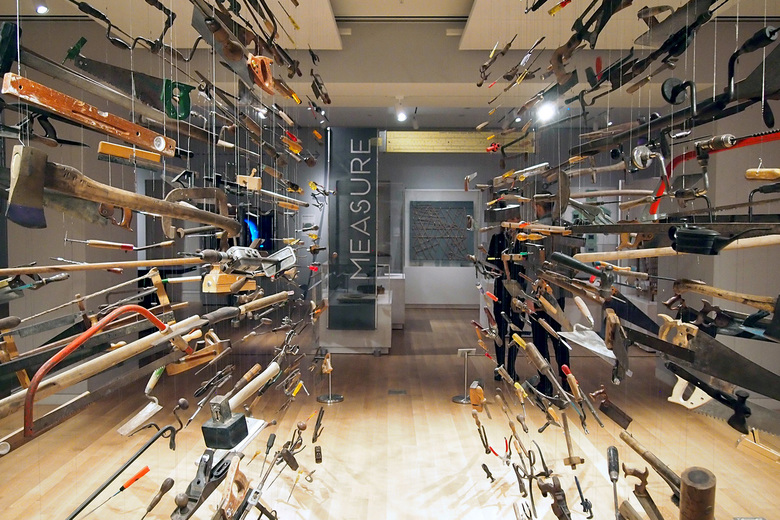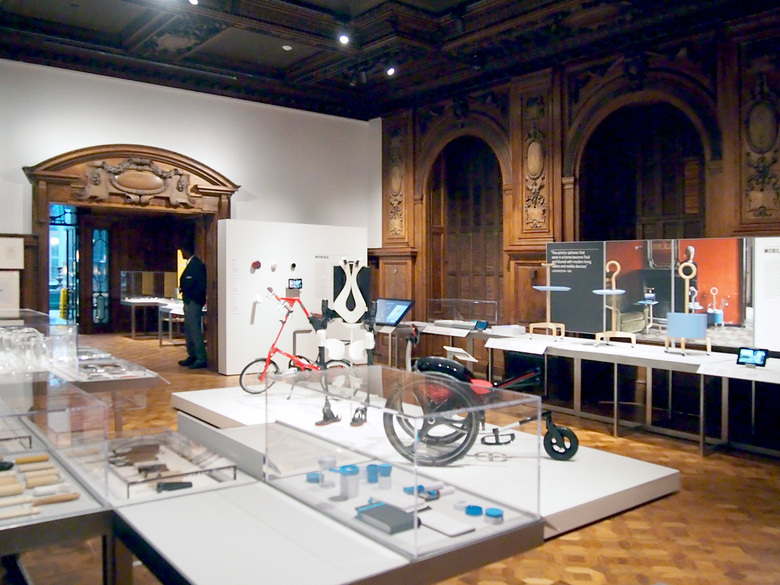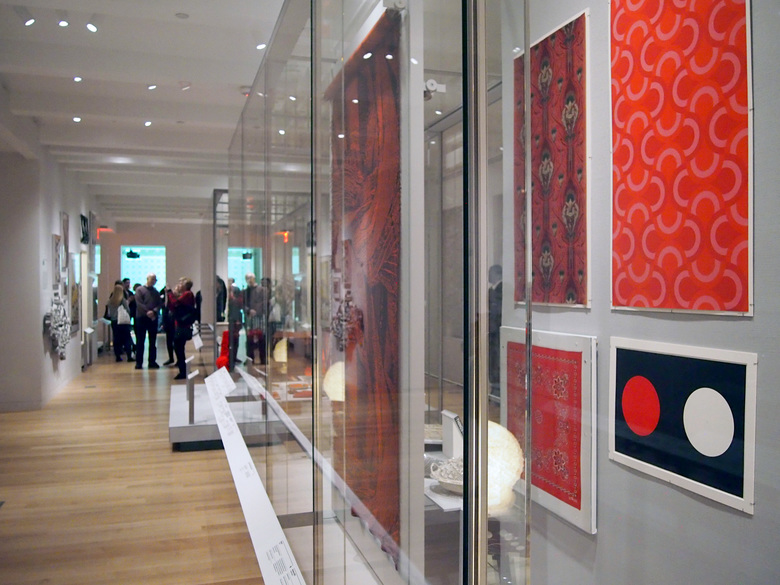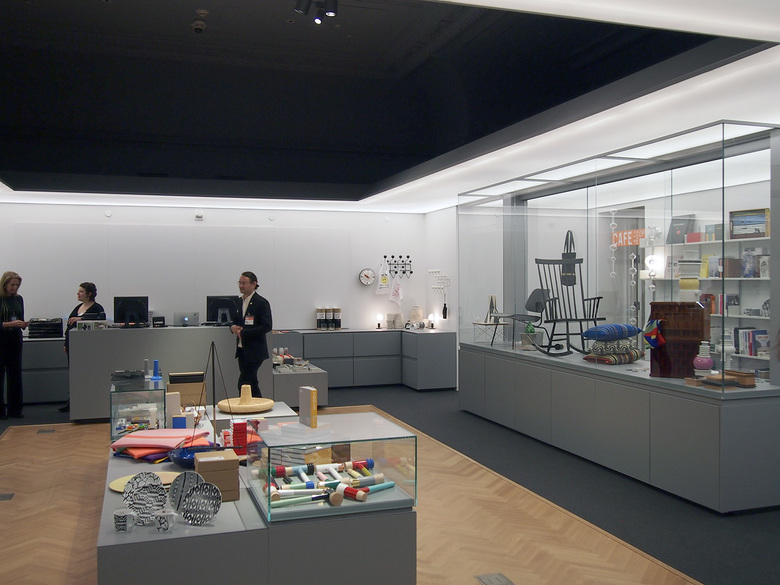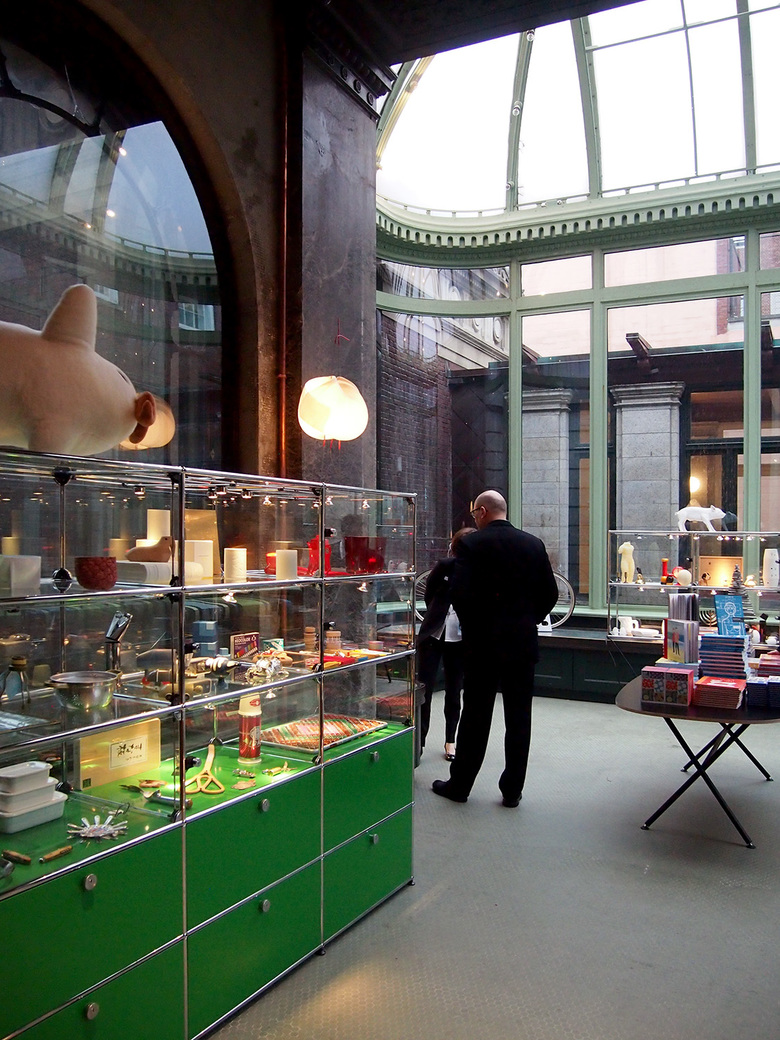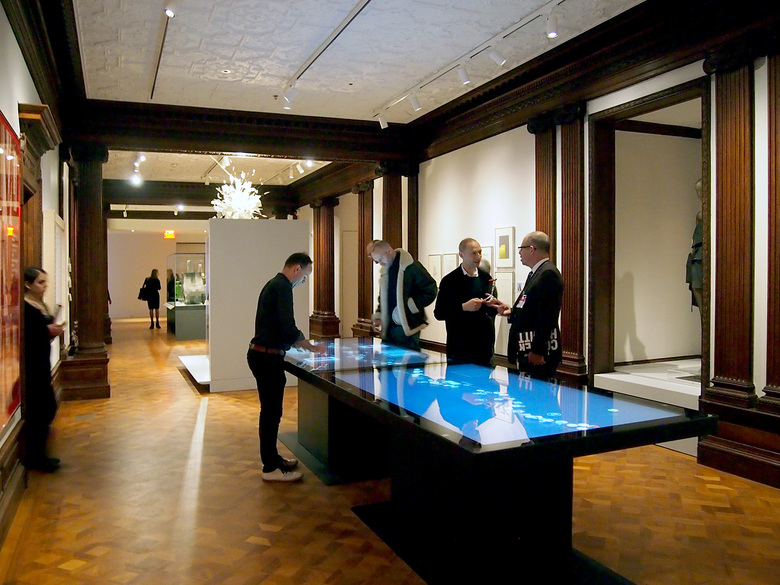Cooper Hewitt Reopens
John Hill
12. December 2014
"Tools: Extending our Reach" exhibition in the third-floor gallery (All photographs by John Hill/World-Architects)
Exactly 112 years to the day after Andrew Carnegie moved into his mansion on New York's Upper East Side, the Cooper Hewitt, Smithsonian Design Museum reopens after a major, three-year renovation of the building.
The renovation that opens today is the product of what Cooper Hewitt Director Caroline Baumann calls a "dream team" of thirteen architects and designers. Primary among them are Gluckman Mayner Architects, which led the mansion's renovation and expansion, and Beyer Blinder Belle, which oversaw the master planning and historic preservation on the project. Of note as well are Diller Scofidio + Renfro, designers of display cases on the first two floors and the new gift shop on the first floor; Local Projects, which handled the interactive media concept and execution; and Pentagram, which designed the visual identity that can be found throughout the mansion and on the Cooper Hewitt's website.
"Beautiful Users" exhibition in a first-floor gallery
The most overt change in the Cooper Hewitt's $91 million renovation is the creation of more gallery space, approximately 60% more for displaying portions of the over 210,000 objects in their permanent collection and for hosting temporary exhibitions. Of its exhibition spaces, the large, 6,000-sf (64,500-sm) gallery on the third floor is brand new, having never been used before for public exhibitions. On opening day, that floor is devoted to the exhibition "Tools: Extending our Reach," while "Making Design," "Hewitt Sisters Collect," "Passion for the Exotic," the Models & Prototypes Gallery and the Immersion Room are found on the second floor; "Beautiful Users," "Maira Kalman Selects" and the hands-on Process Lab are found in the first-floor galleries; and a small exhibit on the making of the new Cooper Hewitt occupies the ground floor.
"Making Design exhibition on the second floor
Outside of the all-important galleries, the renovation includes a new stair designed by Gluckman Mayner Architects, the SHOP Cooper Hewitt designed by Diller Scofidio + Renfro, and a café next to the gift shop. These are the most overtly modern spaces within the museum, where the mansion's historic woodwork and other architectural elements are hardly found (though the shop does spill over into the adjacent conservatory, a beautiful space).
SHOP Cooper Hewitt
SHOP Cooper Hewitt in the conservatory, replete with USM modular furniture
While the architectural interventions within the Carnegie Mansion creating pleasing spaces for looking at exhibits, moving about the museum, or just hanging out, it's the high-tech additions that grab the most attention. These include the Immersion Room, which allows visitors to browse hundreds of wallcoverings in the Cooper Hewitt's collection or even design their own patterns and project them on the walls. And then there are the touch tables that give visitors a new way of exploring the institution's large collection via the Collection Browser app and companion Pen, launching in early 2015, which will enable visitors to "collect" pieces from the exhibitions to learn more about them and even design with the Pens at the tables.
One of the seven touchscreen tables found throughout the museum
Billed as "the only museum in the United States devoted exclusively to historic and contemporary design," their presence in the Carnegie Mansion bridges these two realms, just as the touch tables point toward the future. And looking to the future, two exhibitions of architectural interest taking place in 2015 are Provocations: The Architecture and Design of Heatherwick Studio (19 June 2015 - 15 October 2015) and David Adjaye Selects: Works from the Permanent Collection (30 June 2015 - 15 December 2015).
